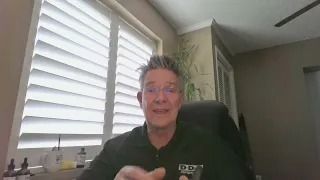80% of older adults can’t afford to age in place
As many as 80% of the 60-and-older population are unable to afford either long-term care or basic necessities like food, reflecting the serious financial challenges faced by older Americans despite their overwhelming preferences for aging in place.
This is according to reporting by Phoenix-based National Public Radio (NPR) affiliate KJZZ, based on data from the National Council on Aging (NCOA) and researchers at the University of Massachusetts at Boston.
The analysis from the NCOA is titled “Increases in Older Americans’ Income and Household Assets Still Cannot Support Most During Financial Hardship.” According to the NPR report, it “looks at the financial state of older Americans by comparing the income, housing value, retirement and other savings of people 60 and older with the cost of of long-term care.”
It also made use of an online tool called the Elder Index, which illustrates the amount of money an older adult will need to live independently.
The 80% share translates to roughly 27 million households, according to the data. Part of this could be tied to a lack of true awareness regarding the costs of necessities in later life, as well as the limitations of a fixed income.
“I think the big issue is in terms of education,” Lauren Marinaro, a legal professional and board member of the National Academy of Elder Law Attorneys, told KJZZ. “And so if people kind of operate from the assumption that, [their] Medicare will take care of this, then they might not make certain plans [or] save for long-term care.”
Certain people are also dead set against the idea of moving into a nursing home or another congregate care setting. This might stem from thinking that they’ll never require such care, she added.
But many older Americans end up developing certain health complications. Data from NCOA puts the figure at nearly 70% of those 65 and older as having some kind of health issue that requires dedicated long-term care.
Americans may also be challenged by a negative shock to their wealth, often brought about by health issues that sap their savings and place them in financially precarious situations. This is according to Sheryl Keeme, executive director of Neighbors Who Care, an Arizona-based nonprofit that connects seniors with volunteers who help them remain in their homes.
“[E]ven though folks do prepare, unexpected health issues that they have not prepared for when they crop up [could] push them into a new category of needing assistance,” Keeme told the outlet.
Aging in place has a number of advantages, particularly as it relates to living costs when compared to dedicated care facilities. But recent data has emphasized the challenges that some can face pertaining to feelings of social isolation and loneliness, as well as the necessity for adequate planning to support longer-term aging-in-place goals.
More than half of baby boomers have expressed no desire to sell their homes. There is also information to suggest that homebuilders are increasingly ready and able to explore the big business potential for those seeking to renovate their homes and better accommodate their changes to mobility, vision and hearing.
Have A Question?
Use the form below and we will give your our expert answers!
Reverse Mortgage Ask A Question
Start Your Loan
with DDA todayYour local Mortgage Broker
Mortgage Broker Largo See our Reviews
Looking for more details? Listen to our extended podcast!
Check out our other helpful videos to learn more about credit and residential mortgages.





